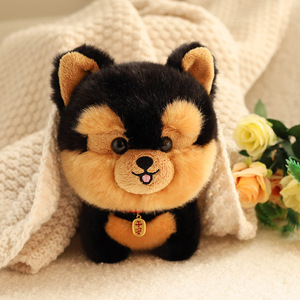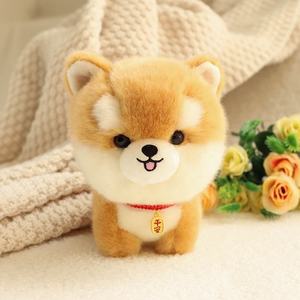(486 products available)































 Ready to Ship
Ready to Ship





































































 Ready to Ship
Ready to Ship























 Ready to Ship
Ready to Ship











 Ready to Ship
Ready to Ship
















 Ready to Ship
Ready to Ship





 Ready to Ship
Ready to Ship














































 Ready to Ship
Ready to Ship











 Ready to Ship
Ready to Ship





Lab plush toys come in different types, each representing common laboratory elements. Below are some standard types:
Molecular Structures
These plush toys typically depict molecules with atoms represented as spheres and bonds as soft connections. The toys usually come in various sizes and colors to represent different chemical compounds, such as amino acids, DNA sequences, or even complex organic compounds. The plush toys are ideal for chemistry enthusiasts, students, or as educational tools in schools.
Bacteria and Cells
Plush representations of lab organisms often depict them in a stylized and cuddly manner. The toys often include bacteria, viruses, and other microscopic organisms. The bacteria and cells come in bright colors and usually have anthropomorphic features like faces, arms, and legs, making them appealing and whimsical. They are popular among microbiology lovers and can be used as teaching aids to make learning about microorganisms more enjoyable.
Lab Animals
Some plush toys mimic the common lab animals used in experiments, such as mice, rats, rabbits, and frogs. The toys are usually constructed to be cute and huggable, often with exaggerated features. The toys are popular among researchers, students, and anyone interested in laboratory settings. Additionally, the toys can be donated to schools or used in educational contexts to teach about these animals' roles in scientific research.
Safety Equipment
Plush representations of lab safety equipment, such as goggles, gloves, and lab coats, are often seen as novelty items. The toys are usually created to be humorous and whimsical, often with faces and plush characteristics that make them more appealing. They are popular among scientists, science students, and anyone who has spent time in a laboratory. Additionally, they can be used as promotional items for educational institutions or companies related to laboratory equipment.
Lab Equipment
Plush toys representing various lab equipment, like beakers, test tubes, flasks, and microscopes, are common. The toys are often designed to be oversized, brightly colored, and with a soft texture. They are usually popular among students, science enthusiasts, and as novelty items in science-themed shops. Additionally, they can be used as educational tools to help children learn about different laboratory tools and their functions.
When selecting lab plush toys for sale, business owners should consider the materials used in making the toys. They should ensure that the toys are made of non-toxic and hypoallergenic materials. In this case, materials that are easy to clean and maintain are preferable. Buyers should also get lab plush toys in various sizes. This will give customers the opportunity to choose toys that fit their preferences and spaces. Also, buyers should get toys with well-constructed and reinforced seams. Such toys cannot easily tear or fall apart during play. Additionally, they should get toys with high-quality and durable fabrics. Such toys can withstand frequent use and washing without losing their shape or appearance.
Buyers should also consider the level of realism that their customers might want. In this case, they should get lab plush toys with realistic features like distinctive markings, expressive eyes, and accurate colorations. More importantly, buyers should get lab plush toys with safety features. Such toys come with safety features like detachable, well-sealed eyes and non-toxic materials. They should also get lab plush toys with various interactive elements. Such elements include squeakers, crinkles, and various sound effects. Buyers should get toys that are easy to maintain. In this case, they should get toys that are machine washable and have removable parts. It is also important for buyers to consider the toy's size.
In this case, they should ensure that the toy's size is appropriate for the intended age group. Toys meant for young children should not be too large or too small. Moreover, they should ensure that the toy's design is suitable for the intended age group. Some toys have complex designs that are appealing to older kids, while others have simple designs suitable for younger kids. Buyers should also get lab plush toys that can serve different purposes. For instance, toys that can be used for educational purposes, and as therapy aids. If buying plush toys in bulk, business owners should pay attention to the minimum order requirements. Some suppliers have high minimum order requirements, making it difficult for business owners to start their businesses.
Emotional support
Plush toys provide emotional support. They help reduce anxiety and stress. This is because people believe plush toys understand their feelings. They do not judge them. Therefore, people feel comfortable sharing their thoughts with the toys.
Companionship
Plush toys offer companionship. This is especially to people living alone. Adults and children form attachments to plush toys. They play with them and take them on adventures.
Imaginative play
Plush toys stimulate imaginative play. Children create stories and scenarios with the toys. This helps develop their cognitive skills. It also enhances creativity. In addition, the toys help with social skill development.
Soft and cuddly
Plush toys are soft and cuddly. This makes them comforting to hug. The comforting feeling comes from the softness. The toys use different materials to achieve the softness. Some common materials are cotton, wool, and plush fabric.
Variety of materials
Plush toys use a wide variety of materials. These materials add different textures. Some common materials are plastics, metal, rubber, and fabric. The choice of material depends on the type of plush toy.
Detailed craftsmanship
Plush toys have detailed craftsmanship. This includes realistic facial features and neat stitching. The craftsmanship makes the toys more appealing. It also makes them look like the characters they represent.
Durable construction
The durable construction of plush toys ensures they last for years. The stitching and seams do not easily tear. This is because many children pull and tug at their favorite toys. In addition, the materials do not easily wear out from regular washing.
Lab plush toys come in different designs. The toys' design depends on the animal or character the toy is imitating. For instance, the plush toy's design closely resembles a lab dog. The toy has realistic facial features. It is also well-crafted with neat stitching. In addition, most plush toys have a design that makes them easily identifiable. For instance, some toys have unique colors and shapes. The materials used to make the plush toys are soft and cuddly. This makes them comfortable to hug. Additionally, the plush toys are filled with cotton, wool, and synthetic fiber. These materials give the toys a comforting feeling.
Before purchasing any type of toy, it is important to consider its safety and quality. Below are some safety and quality considerations of lab plush toys.
Material safety
Safety starts with the materials used in making lab plush toys. The materials should be non-toxic and hypoallergenic. In this case, the plush toys should be made from polyester and cotton. Furthermore, the dyes used in the fabrics should be non-toxic. This prevents any allergic reactions or poisoning when a child plays with the plush toy.
Durability and Quality of Construction
When it comes to plush toys, durability is very important. The toy should be well-constructed using double-stitched seams and reinforced joints. This ensures the toy can withstand rough play without falling apart. Furthermore, it should have a durable outer fabric that maintains its shape even after washing. It should also have securely attached parts like eyes and other accessories. This ensures the attached parts do not come off easily and pose a choking hazard.
Compliance with Safety Standards
Safety compliance is a must for any plush toy. Buyers must ensure the plush toy complies with ASTM International or EN71 standards. These standards address the mechanical and physical properties, flammability, and chemical properties of the toy. Furthermore, it's a must for the toy to pass a safety test to ensure it's suitable for children of all ages.
Softness and Cuddly Comfort
Plush toys are meant to be comforting and soft. Therefore, the plush toy should be made from soft, hypoallergenic materials. In this case, the outer material should have a gentle touch on the skin. Additionally, the filling should be soft and supportive. This ensures the toy retains its shape and provides comfort.
Washability and Hygiene
Plush toys require regular cleaning to maintain hygiene. In this case, the lab plush toy should have washable features. It should also have a removable cover that can be washed separately. This makes it easy to remove any dirt or dust without damaging the toy. Additionally, the washing instructions should be clear. This ensures the toy maintains its quality over time.
Q1. Are lab plush toys customizable?
A1. Yes, it is possible to customize lab plush toys. Various optional features are offered, including personalized messages, different sizes, and unique clothing or accessories. The plush toy is made more personal and memorable through customization.
Q2. What materials are used in lab plush toys?
A2. In creating lab plush toys, high-quality, non-toxic materials are used. The materials used include soft and fluffy fabrics for the outer covering and hypoallergenic stuffing for the inner filling. Some plush toys have additional features like LED lights and sound modules.
Q3. How can buyers ensure the quality of lab plush toys?
A3. Buyers can check the quality of lab plush toys by looking at the certifications, reading reviews, and requesting samples. Certifications demonstrate that the plush toy has been tested for safety and quality. Reviews from other buyers provide information about the quality and durability of the toy.
Q4. Are lab plush toys suitable for all age groups?
A4. Yes, lab plush toys are manufactured to cater to different age groups. There are plush toys for children, teenagers, and even adults. However, when buying for a specific age group, it is necessary to consider individual preferences and interests.
Q5. Can lab plush toys be used as educational tools?
A5. Yes, lab plush toys can be used as educational tools. They are particularly helpful in teaching children about different animals and encouraging imaginative play. Plush toys with unique features like detachable organs are also used in teaching medical students anatomical structures.